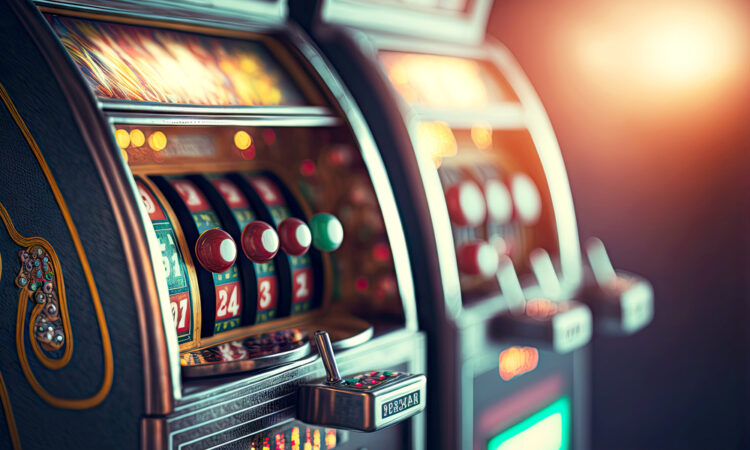When assessing RTP rates in slot machines, it is essential to understand how these rates can impact your potential returns. Evaluating RTP involves analyzing the percentage of wagered money that a slot machine is programmed to pay back to players over time. This information is typically displayed as a percentage, with higher percentages indicating a better potential return for players.
To effectively evaluate RTP rates, it is important to compare them across different slot machines. Look for games with RTP rates that are close to or above the industry average, which is typically around 95% or higher. Keep in mind that while RTP provides insight into long-term payout potential, it does not guarantee specific outcomes for individual gaming sessions.
Additionally, consider other factors such as volatility when assessing slot machines. High volatility games may offer larger payouts but less frequently, while low volatility games may provide more frequent but smaller wins. Finding a balance between RTP rates and volatility can help you choose slot machines that align with your gaming preferences and goals.
By approaching RTP evaluation with a strategic mindset and considering various factors, you can make more informed decisions when selecting slot machines to play. Remember that RTP rates are just one aspect to consider, and combining this information with your own gaming strategy can enhance your overall experience and potentially improve your chances of winning.
Importance of RTP Rates in Slots
When assessing slot machines, the significance of Return to Player (RTP) rates is pivotal. RTP rates represent the proportion of total bets that a slot machine will return to players over its operational lifespan. Understanding RTP rates is essential for making informed decisions regarding which slots to engage with, as higher RTP rates generally imply increased chances of winning.
Opting for slot machines with elevated RTP rates can enhance the probability of securing winnings. It’s important to note that RTP rates can vary across different slot machines, underscoring the necessity of verifying these rates before commencing play.
Prioritizing RTP rates in your selection of slot machines can contribute to a more engaging and potentially lucrative gaming experience.
Check out our article How to Find the Best High RTP Slots at Online Casinos.
Calculating RTP Percentage
Understanding how to calculate the RTP percentage of a slot machine is essential for players seeking to make informed decisions.
The formula for calculating the RTP percentage involves dividing the total amount returned to players by the total amount wagered on the machine during a specific timeframe. This total amount returned includes all winnings paid out by the machine.
By applying the formula: (Total Amount Returned to Players / Total Amount Wagered) x 100 = RTP Percentage, players can determine the percentage of wagered money that’s returned to them over time.
This calculation provides a factual basis for evaluating which slot machines may offer more favorable returns, aiding in strategic gameplay decisions.
Factors Influencing RTP Rates
Factors influencing RTP rates in slot machines are essential for players seeking to optimize their winnings. The design and mechanics of a game play a significant role in determining its RTP. Slot machines with a higher number of reels and paylines generally exhibit lower RTP rates. Additionally, the inclusion of specific symbols and bonus features can influence the overall RTP of a game.
The volatility of a slot machine is another crucial factor to consider. Games with high volatility may offer larger payouts but less frequently, impacting the overall RTP for players.
Furthermore, the software provider responsible for developing the slot machine also influences the RTP rates. Different providers have distinct approaches to setting these rates, which can affect the player’s potential returns.
Interpreting RTP for Slot Selection
Understanding Return to Player (RTP) rates is crucial when selecting slot machines that match your gaming preferences. RTP represents the percentage of wagered money that a slot machine is expected to return to players over time. A higher RTP indicates a greater likelihood of long-term winnings, although immediate success isn’t guaranteed.
It’s advisable to opt for games with RTP rates exceeding 95% for improved odds. Nonetheless, it’s important to note that RTP is based on millions of spins, and short gaming sessions may not accurately reflect the expected return.
Strategies for Maximizing RTP Benefits
Maximizing RTP benefits in slot machine play involves adopting strategic approaches to improve overall gaming returns. Start by selecting slots with higher RTP percentages for better long-term profitability.
Utilize bonuses and promotions to extend playtime without increasing personal risk. It’s essential to manage your bankroll effectively by setting and adhering to betting limits.
Exploring various slot variations and game features can help identify options that align with your playing style and offer higher RTP rates. By combining these strategies, you can enhance your chances of maximizing RTP benefits and experiencing more lucrative slot sessions.
Conclusion
Understanding how to assess Return-to-Player rates in slot machines empowers players to make informed decisions. Prioritizing games with higher RTP percentages enhances the likelihood of long-term winnings. It is essential to also consider aspects such as game design and volatility to optimize potential payouts. By applying this knowledge, players can strategically select games and enhance their overall gaming experience.

